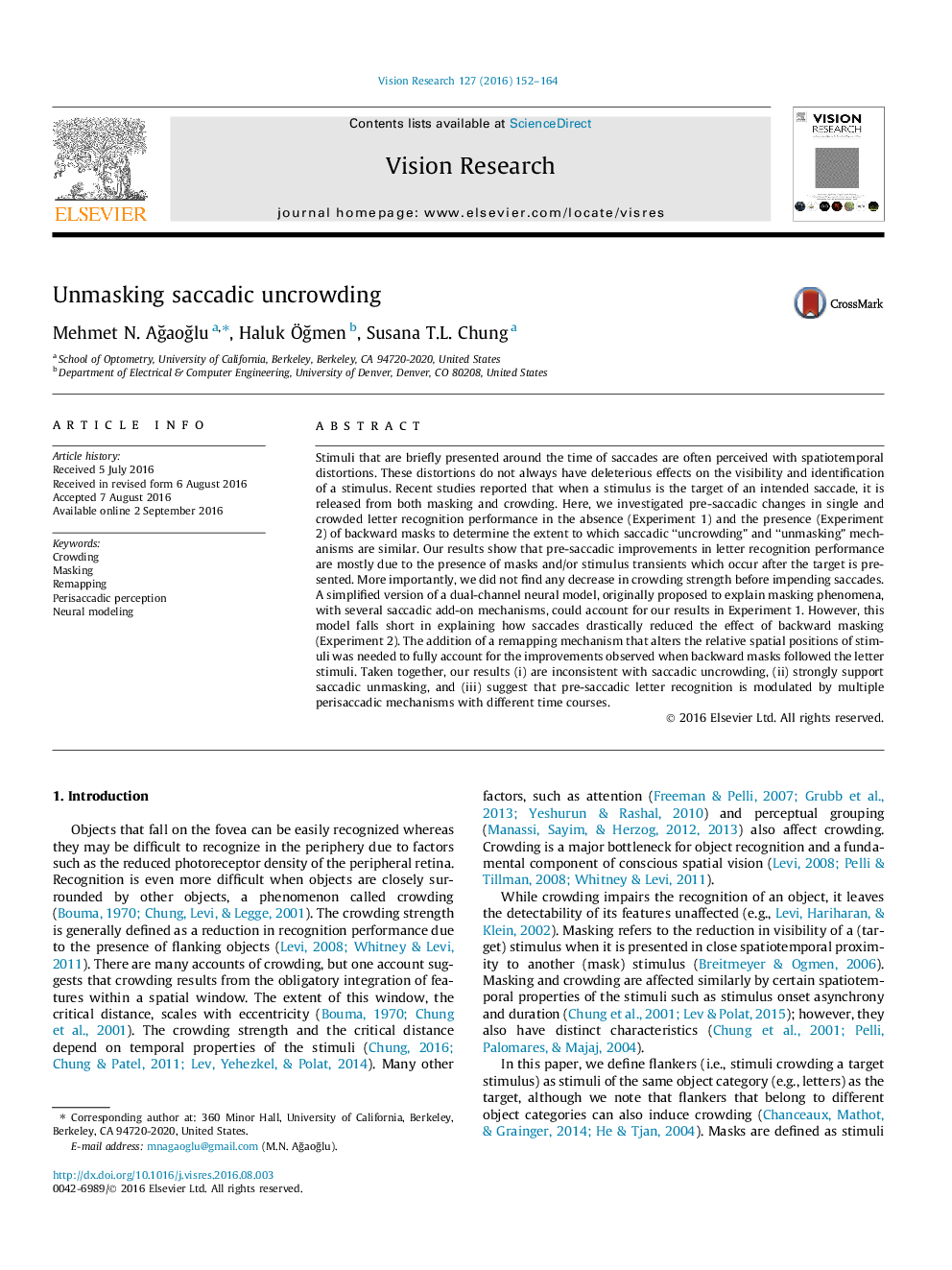| کد مقاله | کد نشریه | سال انتشار | مقاله انگلیسی | نسخه تمام متن |
|---|---|---|---|---|
| 6202886 | 1603172 | 2016 | 13 صفحه PDF | دانلود رایگان |
Stimuli that are briefly presented around the time of saccades are often perceived with spatiotemporal distortions. These distortions do not always have deleterious effects on the visibility and identification of a stimulus. Recent studies reported that when a stimulus is the target of an intended saccade, it is released from both masking and crowding. Here, we investigated pre-saccadic changes in single and crowded letter recognition performance in the absence (Experiment 1) and the presence (Experiment 2) of backward masks to determine the extent to which saccadic “uncrowding” and “unmasking” mechanisms are similar. Our results show that pre-saccadic improvements in letter recognition performance are mostly due to the presence of masks and/or stimulus transients which occur after the target is presented. More importantly, we did not find any decrease in crowding strength before impending saccades. A simplified version of a dual-channel neural model, originally proposed to explain masking phenomena, with several saccadic add-on mechanisms, could account for our results in Experiment 1. However, this model falls short in explaining how saccades drastically reduced the effect of backward masking (Experiment 2). The addition of a remapping mechanism that alters the relative spatial positions of stimuli was needed to fully account for the improvements observed when backward masks followed the letter stimuli. Taken together, our results (i) are inconsistent with saccadic uncrowding, (ii) strongly support saccadic unmasking, and (iii) suggest that pre-saccadic letter recognition is modulated by multiple perisaccadic mechanisms with different time courses.
Journal: Vision Research - Volume 127, October 2016, Pages 152-164
